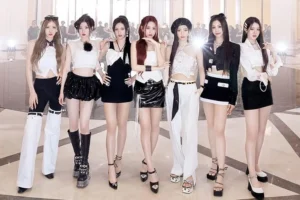Claude Monet, Woman with a Parasol – Madame Monet and Her Son, 1875, oil on canvas, Collection of Mr. and Mrs. Paul Mellon, 1983.1.29
The Smithsonian Institution, long revered as the guardian of America’s cultural and scientific heritage, has taken a revolutionary leap into the digital age with Smithsonian Open Access—an initiative that removes the barriers between its vast collections and the global public. With more than 5.1 million 2D and 3D digital assets—spanning art, history, science, and culture—now freely available for download, modification, and reuse, the Smithsonian is not simply preserving history; it is inviting the world to reshape it.
This groundbreaking move challenges traditional notions of ownership, authorship, and access within the museum world, setting a new precedent for how cultural institutions can engage with the digital commons.
A Radical Shift in Museum Philosophy
For centuries, museums functioned as gatekeepers of knowledge—curating collections behind velvet ropes, glass vitrines, and copyright restrictions. The Smithsonian’s decision to release millions of high-resolution images, 3D scans, and research datasets under Creative Commons Zero (CC0)—meaning they are entirely free for public use—marks a profound ideological shift. No longer content with being a passive archive, the Smithsonian repositions itself as a platform for global creativity.
This transformation aligns with a broader movement toward open cultural data, joining institutions like the Rijksmuseum and the Metropolitan Museum of Art, which have also released parts of their collections into the public domain. Yet, the Smithsonian’s scale is unparalleled: its digital library includes everything from the Wright brothers’ 1903 airplane patent to 3D fossils of prehistoric mammals, from portraits of Frederick Douglass to HD images of Buddhist sculptures. The message is unambiguous: history is not proprietary. It belongs to everyone.
More Than an Archive: The Digital Smithsonian as Toolkit
Smithsonian Open Access is not merely a static archive—it’s a dynamic toolkit for innovation. By offering not only imagery but 3D models, metadata-rich datasets, and open API access, the initiative empowers a spectrum of users well beyond academics or traditional museumgoers:
- In education, teachers can print 3D replicas of ancient tools or Viking swords, giving students tactile, immersive learning experiences.
- In the arts, designers and creatives can integrate 19th-century scientific illustrations or vintage type specimens into new works, textiles, apps, or installations.
- In research and engineering, scientists can analyze the aerodynamics of historic aircraft or train AI systems using labeled biological and geological samples.
- In cultural reclamation, Indigenous communities can access digitized language recordings, ancestral artifacts, or traditional designs to use in preservation or revival efforts.
A compelling example is the Cooper Hewitt’s digitized patent archive, now a trove for furniture makers, industrial designers, and game developers alike. A craftsman in Nairobi might reinterpret a 1930s Bauhaus table; a coder in Tokyo might map a Smithsonian star chart into a virtual planetarium. The possibilities are limited only by imagination.
Power, Profit, and Provenance: The Complications of Cultural Openness
As visionary as it is, Smithsonian Open Access surfaces difficult questions about ethics, equity, and history:
- Colonial Legacies: Many artifacts were acquired during periods of imperial conquest or unequal exchange. Does digitizing and sharing these materials without contextual restitution risk perpetuating the same extractive logic that brought them into Western institutions in the first place?
- Commercial Exploitation: The CC0 license allows unrestricted use, meaning both small creators and billion-dollar corporations can profit from public cultural assets. Should there be parameters to ensure ethical use or profit-sharing?
- Experience Dilution: Some conservators argue that hyper-accessibility of digital reproductions might devalue the original artifacts, diminishing the incentive to visit museums and weakening the aura of the physical object.
These tensions reflect a broader dilemma: how do we embrace openness without replicating the injustices of the past?
A Cultural Infrastructure for the Future
Despite its complexity, the Smithsonian’s initiative is a future-facing act of faith in the public. It also lays the groundwork for innovation that may reshape how we engage with history, art, and science:
- Immersive Experiences: With WebXR and VR platforms, users can manipulate 3D scans of historical objects, touring virtual galleries from home or even within classrooms.
- Crowdsourced Intelligence: The public could be invited to tag, annotate, or contribute insights—creating a living archive enriched by many voices.
- Blockchain Verification: Smart contracts could provide provenance trails for reused digital artifacts, ensuring transparency in adaptation, remixing, and redistribution.
- Cross-Institutional Collaboration: With open protocols, museums across continents can begin to create interlinked global archives, enabling users to trace shared histories and diasporic objects through time and space.
Such developments hinge on the trust and generosity Open Access instills. They also demand an evolving ethics of care—for artifacts, cultures, and the people connected to them.
From the Pacific to the Pixel: Democratization in Action
It’s already clear that Smithsonian Open Access is far from symbolic. Consider how:
- A Hawaiian language revitalization program used digitized field notes from early 20th-century anthropologists to rebuild a curriculum for endangered dialects.
- A Berlin-based artist collective created a mixed-media exhibition entirely sourced from 3D-scanned fossils and astronomical maps, challenging anthropocentric views of art history.
- An elementary school in Wisconsin used printable insect models from the National Museum of Natural History to build an ecology lab during lockdowns.
These are not isolated anecdotes. They’re signals of a paradigm shift: cultural institutions no longer sit at the top of a knowledge hierarchy. They become nodes in a distributed, participatory, and remixable web of shared human inheritance.
Radical Generosity in a Privatized Age
Perhaps the most profound aspect of the Smithsonian’s initiative is its defiance of the privatized knowledge economy. At a time when paywalls, subscription models, and proprietary algorithms increasingly gatekeep information, the decision to freely open a national archive to the world is both rare and radical.
It challenges other institutions to do the same. It invites schools to rethink curricula. It empowers creators in under-resourced regions to access cultural capital once hoarded in elite vaults. It even offers a subtle rebuke to Big Tech’s model of closed systems and data hoarding.
In this way, Smithsonian Open Access is not just a digital policy—it is a cultural proposition. A call for more horizontal knowledge structures. A pushback against scarcity logic in the age of digital abundance. A reminder that cultural wealth grows when shared, not when guarded.
What Will You Make of It?
Smithsonian Open Access is more than a catalog. It is an invitation. An infrastructure. A provocation. It dares us to imagine a world where the treasures of science, art, and history are not cordoned off but handed over—to remix, reanimate, and reimagine.
In doing so, it not only shifts how museums operate, but how we define participation in the knowledge economy. From the classroom to the studio, from Indigenous nations to digital start-ups, everyone is now positioned not as a visitor or consumer—but as a co-author of cultural memory.
So—what will you create?
No comments yet.







